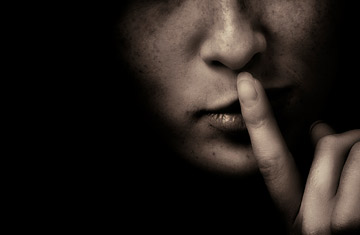
I've never been much for Gay Pride Month — for my part, I like guys during all the months — but June also happens to be the month when, 27 years ago, scientists published the first account of the disease that came to be known as AIDS. From the early '80s until 1995, when AIDS deaths in the U.S. crested, the plague arrested and then completely subsumed gay culture. In his new book Chronicle of a Plague, Revisited, Andrew Holleran writes that living in gay New York in the '80s "felt like attending a dinner party at which some of the guests were being taken outside and shot, while the rest of us were expected to continue eating and making small talk."
In the years after antiretroviral drugs began saving lives, the tense fear that Holleran describes gave way to hope, wary optimism and then finally a wild spurt of gay partying in the 1990s. I came out in 1993, when I was 22. For the rest of that decade, I didn't know any gay men who had AIDS, but I knew plenty who took ecstasy every weekend.
And now, the hangover. At some point in the middle of our Lucullan outburst, gays willingly — joyously — stopped talking about AIDS. I don't mean it never came up — there were plenty of Angels in America screening parties in 2003 — but an awkward silence descended in the bedroom. Gay men of my generation had never really known AIDS, so it seemed weird to bring it up when you were about to have sex with someone.
But silence, it turns out, still equals death. Researchers believe HIV infections among gays are rising. There can be a long lag time between infection and diagnosis, so it's difficult to gauge precisely how much HIV is spreading. But various studies in the last few years have reported increases in unprotected sex among gay men, partly because of the spread of crystal meth. Too many guys are bringing condoms to their sexual encounters but then not using them.
Public-health experts are now fighting back with a new online campaign. On June 11, New York University, Public Health Solutions (a New York-based nonprofit) and a filmmaker named Todd Ahlberg launched a website called hivbigdeal.org. It features two online short films designed to remind gay men that — duh — HIV is still deadly, and that we must talk about it in the bedroom, during those awkward moments before sex. The films are called The Morning After and The Test, and I can't stop thinking about them. A disclaimer: while the shorts are smartly directed, they are poorly acted, and some of the dialogue — which was partly written by public-health officials — sounds stilted and finger-wagging, like something you would hear at an HIV clinic when you go for a test.
But I haven't seen anything that so cleverly explores the capacity gay men have for fooling themselves when they want to unwind with sex or substances. The story follows Josh, a 26-year-old gay man who gets drunk a lot, sleeps around, and then faces the stark fear that he is HIV-positive. I won't give away the ending, but it's not that important. The key parts of the movies are those that remind us that even in the antiretroviral era, getting HIV is an enormous medical and psychological burden. "The medications aren't as easy on you as they look to other people," Josh tells an HIV-positive friend. The drugs are also expensive and potentially dangerous: the long-term effects of a lifetime on antiretrovirals have yet to be assessed.
The Morning After and The Test accurately depict the real world because the researchers who worked on the films know the data so well. One of the researchers behind the film, Mary Ann Chiasson, 58, worked for the New York City Department of Health for nearly 14 years, beginning in June 1986. It was important to her in conceiving the character Josh not to create a gay man who would be an extreme caricature. Josh drinks too much, but he isn't a bug-eyed crystal-meth addict because — despite many lurid news stories — very few gay men who have unsafe sex do so on crystal. Only 6% of at-risk gay men cited in a 2004 study that Chiasson coauthored for the journal AIDS Care had used crystal before or during sex.
Chiasson's research has found some reasons to be hopeful: gay men who meet their sex partners online (as most young gay men do) rather than in bars are significantly less likely to report substance use before sex and significantly more likely to disclose their HIV status before sex. It's easier to ask someone if he is positive when he is just a screen name.
It's not surprising that the HIV discussion is so hard to have. Death isn't much of an aphrodisiac. But Chiasson and her colleagues have found that men who watch The Morning After are three times more likely to disclose their HIV status the next time they hook up. That's not a bad start.
